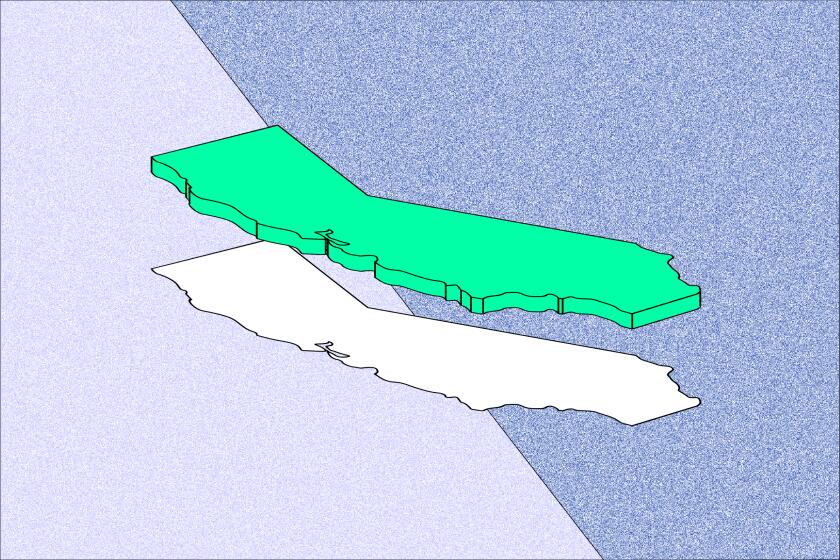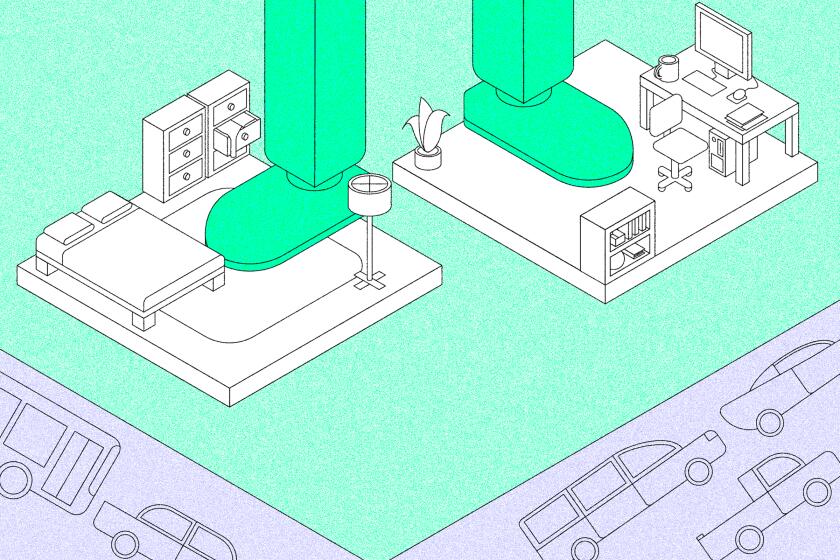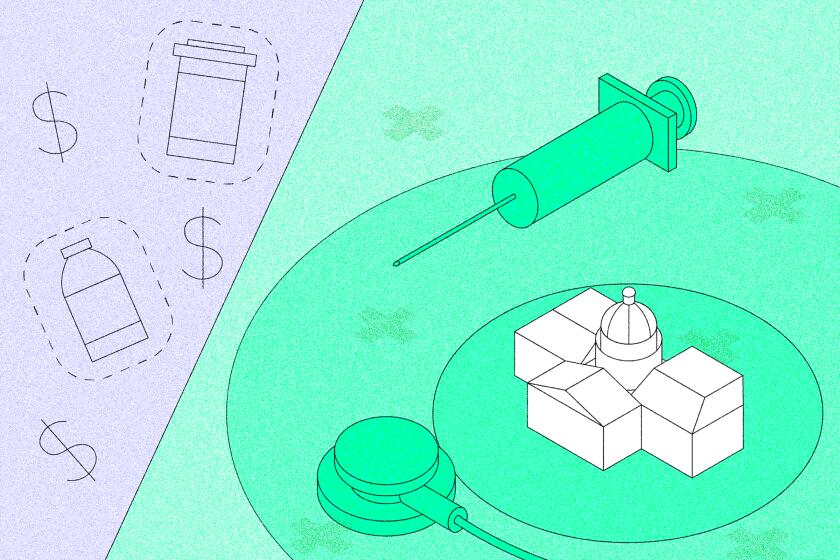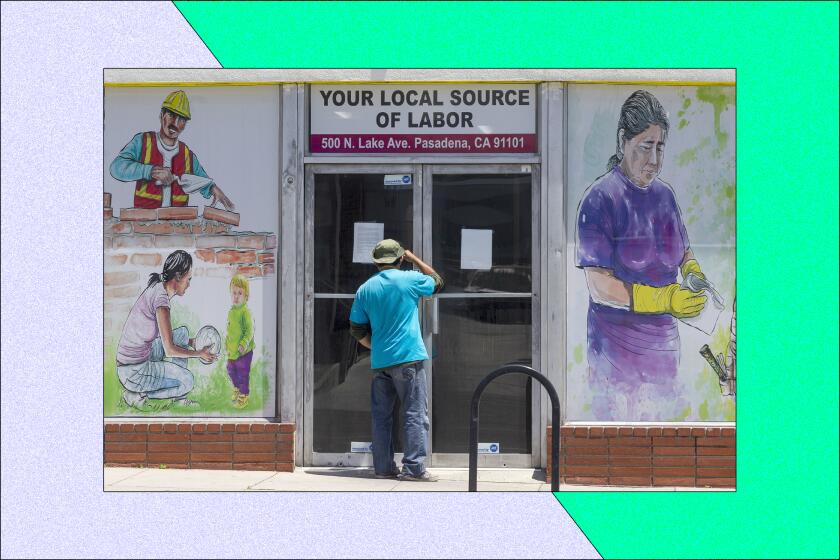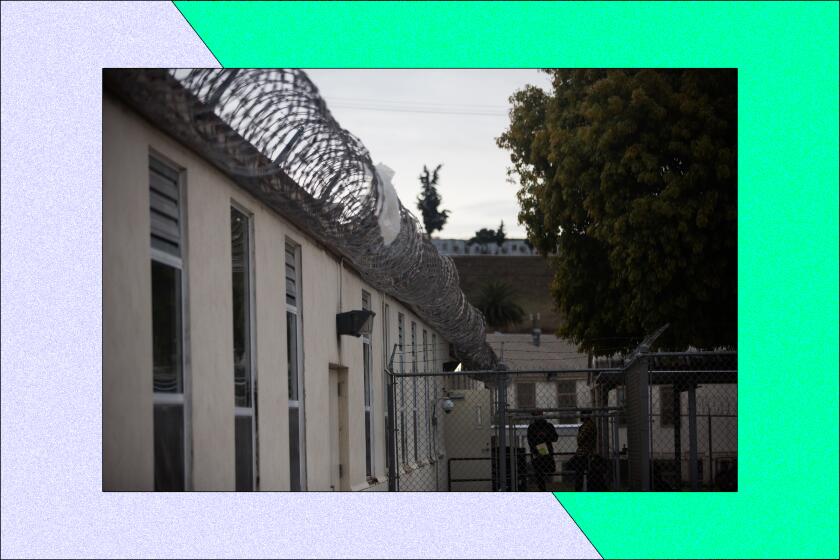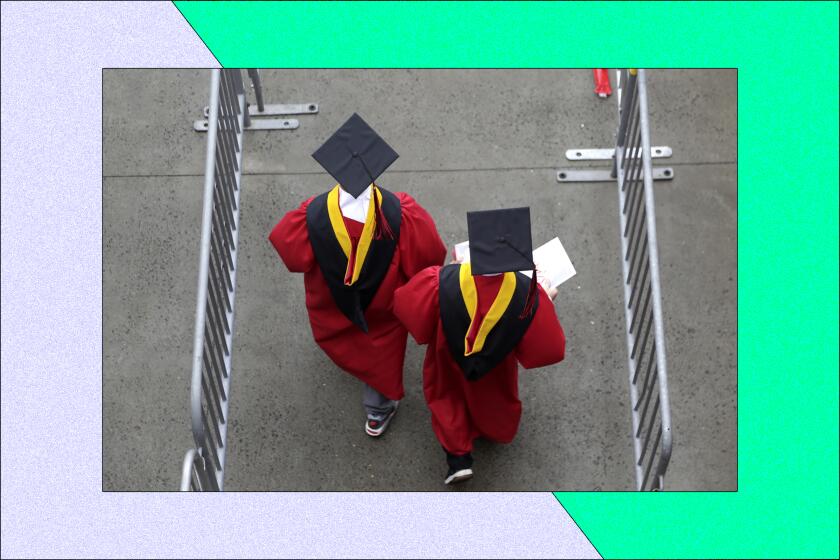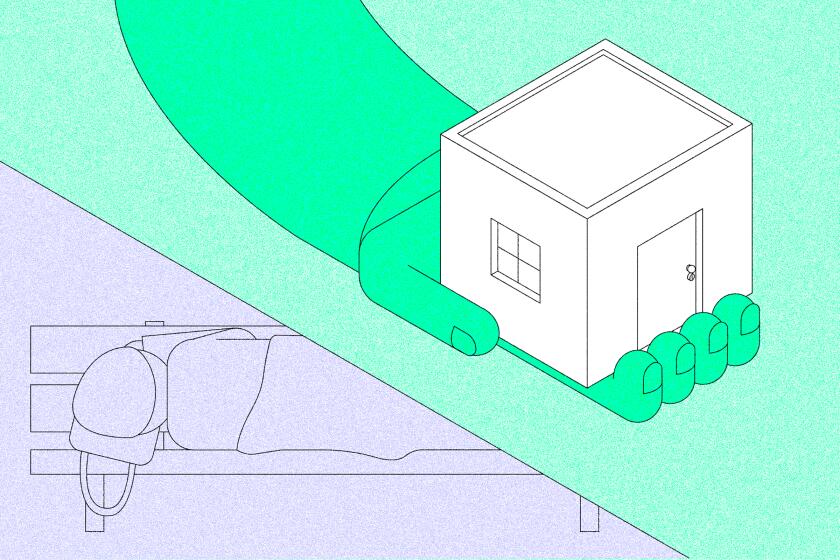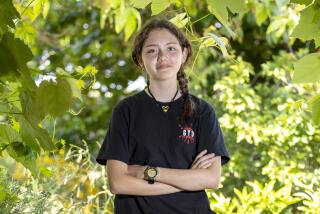Editorial: The pandemic let us imagine a world without waste
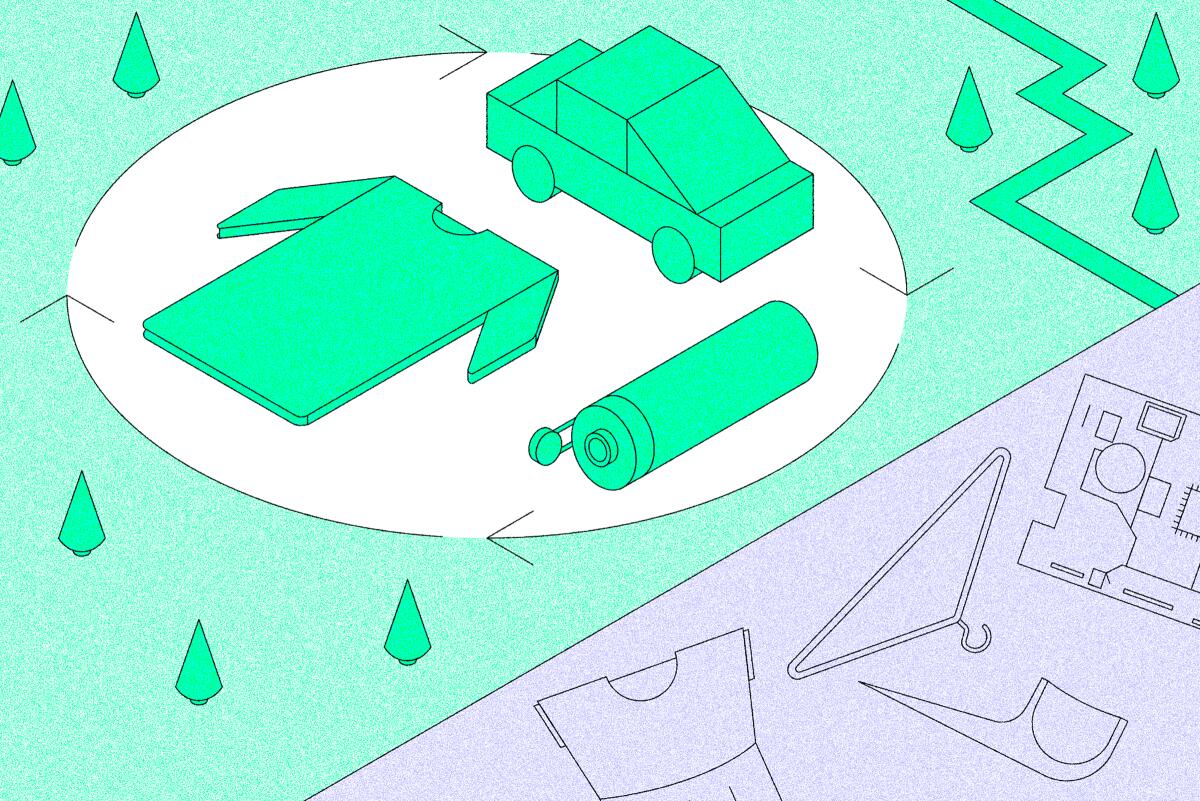
- Share via
To wrap your mind around the vast problem of waste, it helps to start by thinking about the disposable dental flosser.
If you’re not familiar with this particular oral health implement, picture a plastic fork with two tines connected by a length of dental floss. It is designed for a single occasion of between-the-teeth cleaning. People with working fingers don’t need them; floss alone will do the trick. But, dang, these little guys are so convenient and affordable. Amazon sells a stash of 540 for less than $15.
And when the day’s teeth cleaning is finished, the flosser is thrown away. It might be recycled, but odds are good it will be taken to a landfill and outlive its users as well as many generations of their descendants.
I don’t mean to pick on disposable dental flossers as singularly pernicious. They are no better or worse than a million other products Americans buy and use every day. But they are a useful stand-in to illustrate the unsustainability of our current economic model, which relies on extracting resources and then sending them on an inexorable one-way journey from manufacturing facility to trash heap.
The so-called linear economy — or a “take, make, waste” system — that has been the basis of our industrialized society for the last 150 or so years has wrought so much damage to the environment that we might just consume ourselves out of existence unless something changes soon.
Fortunately for us, there is a better way, and one that recently has begun to gain real traction outside the world of economists and environmentalists. It’s called the circular economy because it envisions a system in which every product, building, vehicle — every thing — is designed to have a long and useful life and afterlife.
This is not about recycling bottles and cans better or using a plastic bag more than once, though recycling on a massive, industrywide scale is part of it. In their 2020 book “The Circular Economy Handbook,” Peter Lacy, Jessica Long and Wesley Spindler explain it as “keeping products and resources in use for as long as possible and, at the end of use, cycling (or ‘looping’) their components and materials back into the system in zero-waste value chains.” It’s a fundamental shift in the way we make and consume everything, whether it’s food, clothes, buildings or vehicles, with the goal of reducing or even eliminating waste and, in the process, substantially cutting greenhouse gas emissions as well.
Backyard composting provides a model for how the circular economy works at its most basic level. Food scraps and tree trimmings go into a compost bin, decompose and eventually transform into nutrient-rich soil to help grow more food and trees. It’s an infinitely repeating loop of production and consumption, with no waste or toxic byproduct that must be buried in a deep hole. But this concept can be applied to just about any industry.
Imagine it, a world without waste. It sounds impossibly utopian. How could we live without generating trash every time we clean our teeth? But it is doable. In fact, we have done it. Humans relied on a circular model for the vast majority of their time on this planet — until the Industrial Revolution ushered in the exploitative, dysfunctional and unhealthy relationship with resources that we have today.
Also, we no longer have much choice.
Energy-efficient homes and electric cars and trucks will get us only partway to our climate change goals, Ellen MacArthur said at a recent net-zero virtual discussion hosted by the New York Times. MacArthur is a former competitive sailor who gave up the sport more than a decade ago to begin the eponymous foundation that functions as a sort of circular-economy think tank. Reducing greenhouse gas emissions to livable levels will require changing how we use land and manufacture things such a metals, plastics, cement and food. “We won’t reach the climate target that we’ve set without changing the way that those products are made,” she said.
That’s a big order, but there may be no better time to undertake such significant structural changes than in the post-pandemic recovery over the next few years, according to Mayuri Wijayasundara, a circular economy scholar at Deakin University in Australia. People have already been forced to accept massive disruptions in their habits and expectations, she said, and may be open to the permanent changes that would be required to transition to a circular economy. Supply chains are likely to continue to be strained, opening the door to more small, local manufacturing and a growth in the repair economy. Indeed it was a major disruption in the plastic recycling market in 2018 — when the world’s largest importer of plastic trash, China, shut the door to most plastic from other countries — that primed the public and policymakers to begin embracing the circular economy in a significant way, she said.
What does a circular economy look like in practical terms?
Food systems that recapture all scraps and turn them into compost for the next harvest. Sewer lines tapped to produce heat. Product packaging that can be composted along with yard scraps. A reusable plastic soda bottle shared among beverage companies that can be used again and again. Clothes rental services that give users the same benefits of “fast fashion” without having the same wasteful result.
These aren’t pie-in-the-sky ideas. They are happening, albeit in small-scale ventures. Denver is experimenting with a sewer-heat-recovery project. Coca-Cola is using a universal bottle program in Brazil. California lawmakers are considering a landmark plastic packaging reduction law that is built on circular economic principles. Several clothes rental services, such as Nuuly and Rent the Runway, already exist.
These are hopeful signs, but a few scattered programs may not be enough to make the rapid shift the world needs.
Frustratingly, there’s not much an individual consumer can do to usher change along other than support companies that adopt a circular economic model and eschew those than don’t.
“The fact is, we can’t change it individually,” MacArthur said, adding that “the system has to evolve to make the changes for us so that we have the choices that we need to become circular. We need to redesign the system. We need to redesign the packaging. Then the consumer choice becomes more straightforward.”
Ultimately, the circular economy is not about changing consumer behavior, an approach that has been the bedrock of waste-reduction efforts for decades and clearly isn’t working. The change must start at the top, and that will likely require some governmental intervention to shift responsibility for waste from consumers to the companies that make and distribute products. Extended producer responsibility, as it is called, is the basis for California’s proposed plastic packaging reduction law. “Right to repair” laws, which several U.S. states are exploring, are useful too because they require that manufacturers build products, devices and gadgets in such a way that consumers can have them fixed when they malfunction, rather than tossing them out and buying newer versions.
Targeted “sin” taxes have been useful in reducing cigarette smoking while helping to pay the societal costs of products that are harmful; they could be employed to reduce waste as well. California may soon experiment with that concept if voters adopt a proposed plastic tax on the 2022 ballot. If we want to reimagine California, and the world, without the waste of 540 disposable dental flossers and millions of other things we use and discard every day, someone has to take the first step.
More to Read
A cure for the common opinion
Get thought-provoking perspectives with our weekly newsletter.
You may occasionally receive promotional content from the Los Angeles Times.
